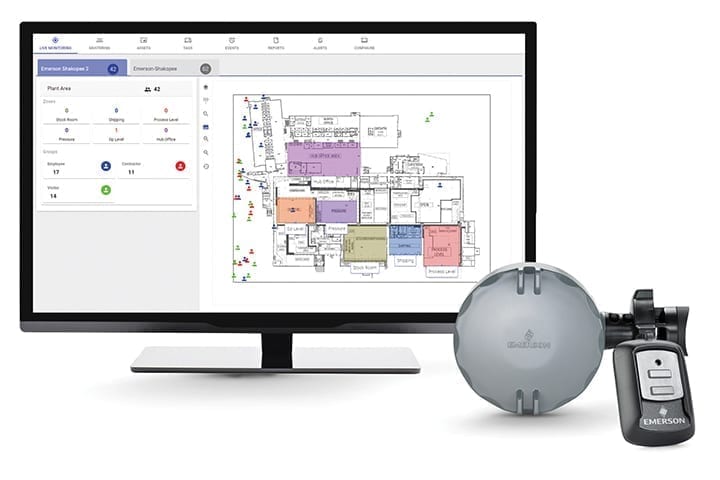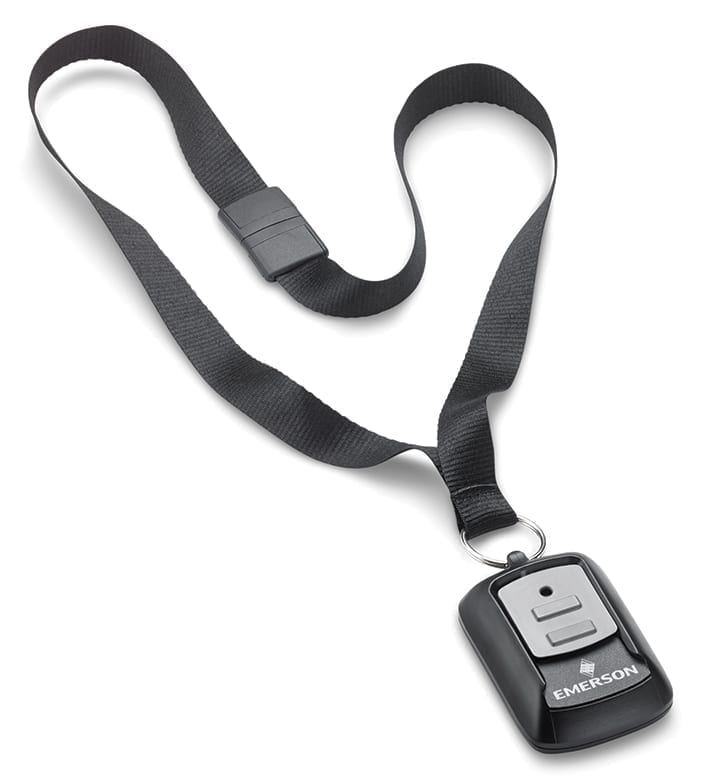Employee Location Monitoring in a Post-Pandemic World
The COVID-19 pandemic has unearthed a number of challenges for power plant managers. However, technology exists to keep workers safe. Through the use of Location Anchors and WirelessHART infrastructure, contact tracing can be easily managed and several other benefits can also be seized.
Maintaining personnel and facility safety is always top-of-mind for utilities and power plant managers. Safety instrumented systems are additional precautions usually taken for processes when temperatures or pressures can be high, and when caustic, flammable, or explosive chemicals are present. But what can be done to reduce high-risk behaviors in the era of COVID-19? What processes can be put into place that help identify and mitigate hazards associated with pandemic-related concerns? How do you balance employee safety while minimizing disruption to the tempo of normal operations?
In this new chapter of workplace challenges, COVID-19 adds further layers of complexity to facility manager efforts to protect workers in these settings. However, due to the movement toward digitalization in the industrial sphere, the power sector is actually better equipped to handle these new challenges than a person might think. Employee location monitoring and contact tracing technology are available and easily integrated into digital tools that already exist, adding functionality to address COVID-19 concerns.
In-person attention is required to keep power and process plants running. Today, the means exist to help reduce transmission rates and keep workers safe, all while sustaining plant operations and maintaining high levels of efficiency.
COVID-19’s Impact on Facility Management and Plant Procedures
The Centers for Disease Control and Prevention has released guidelines for keeping manufacturing workers and employees safe from COVID-19. The main element for reducing the pandemic’s impact on processing facilities is sustaining the right amount of social density between workers. Where an individual moves about their personal daily lives, there is a possibility of that individual becoming infected, no matter how extensive a company’s precautions taken at work. Preventing the transmission of the virus through close and prolonged contact is essential to slowing the spread of infection among groups of employees.
Site managers can keep several critical characteristics of the virus in mind. The incubation period of the virus, after transmission, can take anywhere from several days to over a week. An infected individual can begin spreading the virus one to three days before they show any symptoms, and not everyone infected with the virus will show signs. Testing for infection is not always conclusive and can take several days to get results. During this time, the carrier may still be spreading the virus. The best way to keep the virus in check is to lower social density and promote outdoor activity whenever possible.
Those who are symptomatic or test positive may need to quarantine for a week or more, missing work, disrupting schedules, and creating unique difficulties for staffing 24/7 operations. Without careful monitoring and control, a viral outbreak could escalate quickly, affecting not only the health of a plant’s workforce, but also the stability of plant activities overall. If employees can work remotely, that is a great option, but a certain amount of in-person effort is inevitable. Alternative procedures need to be implemented for the foreseeable future. Close gatherings of personnel have to be avoided, even for brief periods of time. The more prepared a company is, the less likely massive disruptions are to take place.
The Role of Location Awareness in COVID-19 Mitigation
While some areas in a plant already have extensive protective procedures in place, including wearing personal protective equipment (PPE), general safeguards like mask-wearing, avoiding touching common surfaces, and frequently washing or sanitizing hands can be practiced plant-wide. All standard conventional advice for preventing the spread of COVID-19 should be taken into account. Unfortunately, continually maintaining at least six feet of distance between all employees is one of the trickier decrees to follow in this environment.
In some facilities, workers may end up near each other without even knowing it, as platforms above or below them could be occupied. Employees also tend to congregate in communal areas like break rooms, locker rooms, and office areas. Every single person can be made aware of social distancing, or density, guidelines, but it’s human nature for slip-ups to occur. To enforce proper safety measures and control social density, managers can employ location technology to monitor conditions of potential exposure to a viral transmission.
In the past, location monitoring tools were expensive and required extensive infrastructure to install. Now, advancements in WirelessHART technology allow location functionality to leverage WirelessHART infrastructure. Utilizing the strategic placement of Location Anchors to form a mesh network that receives signals from rechargeable personnel tags, managers can access location measurements of everyone in a facility.
These Location Anchors are small, lightweight, and self-powered. Compared to costly Wi-Fi location solutions, this technology is simple and easy to install, requires less maintenance, and is extraordinarily flexible. Anchors can be deployed throughout the process environment, as they are Zone 0 rated. They can also easily be shifted to accommodate changes in coverage areas, allowing a facility to scale as needed; starting small such as at a process unit and scaling to include the whole facility.
Balancing Optimal Efficiency with Social Density
The Plantweb Insight Location application can provide a broad-ranging picture of employee movement throughout your facility (Figure 1). The objective is to avoid situations where people gather in groups and increase the risk of spreading the virus. Geofencing is usually used to prevent workers from entering areas where they are not authorized. For COVID-19 safety guidelines, geofencing can now be utilized to better monitor employee congregation points. Managers can configure location software to automatically detect if preset social density limits are exceeded.
 |
|
1. Powerful application software allows tracking employee movement throughout a facility, and geofencing can be utilized to prevent workers from entering unauthorized areas. Courtesy: Emerson |
Plant managers can use historical data to spot problematic patterns of movement as well. The goal is to use these tools to analyze the habitual routines of employees over time to maximize their opportunities for social density. This historical lens is also highly advantageous if a worker comes down with symptoms or a positive test result for COVID-19. As cases emerge, it’s a simple matter of tracing that individual’s previous movements through the facility when they may have been contagious. With this contract tracing through software analytics, it can be easily determined if others need to be tested or possibly quarantined prior to receiving a negative test result.
This data is also effective for training employees. It can demonstrate funnel points around the facility, showing workers where alternate routes should be found or where extra attention is needed as they move about the area.
Although these additional measures may seem like a hurdle to production efforts, location monitoring tools actually provide the means to become more efficient as well as safer over time. Industrial processes already contain a certain level of risk. Employees are better equipped to handle enhanced safety protocols than the average individual. Knowing that additional measures are being taken to keep them safe in the era of COVID-19 will mean personnel can focus on their precision work and high-value tasks without distraction. The key is finding the right balance between performance and safety. Fortunately, the tools exist to make finding that balance much more accessible.
When Digital Transformation Means a Safer Environment for All
Not only is employee and contractor location monitoring able to make handling COVID-19 concerns more manageable, but there are also several other useful insights and safety measures to gain from this technology. As mentioned before, geofencing can be deployed to keep individuals away from hazardous areas or places where they are not trained to perform the work required. Safety mustering shows which people have moved to correct muster or assembly zones during a safety drill or incident. Alerts can be pressed on personnel tags when workers are injured or in an unsafe situation to indicate an emergency in progress (Figure 2). All of this functionality is built into these tools as well as the new social density monitoring and contract tracing for COVID-19 mitigation.
 |
|
2. Personnel tags offer safety beyond just social density monitoring. Alerts can be triggered with the press of a button, signaling an unsafe situation or an emergency in progress. Courtesy: Emerson |
Outbreaks have shut down manufacturing facilities across the country. To survive the pandemic, power plants and processing facilities must take the threat of coronavirus seriously. Because asymptomatic individuals can spread the virus, managers have to be prepared to take additional steps to ensure social density among employees. Facility managers need the right tools to perform contract tracing when workers are infected to keep the spread down to a minimum. When safety is not enforced, large percentages of the workforce have to be put into quarantine, and businesses close down.
Digital transformation has been revolutionizing the industrial sector in recent years. Automation technology is all about providing creative solutions to the most complex problems. Now, these innovative tools can be used to cope with the effects of COVID-19. Employee location monitoring utilizing WirelessHART is the scalable answer to the new challenges being faced. With these tools, plant managers are empowered to continue operations safely and effectively today and into the future.
Much has been touted about increased optimization and connectivity resulting from the digital revolution. Powerful insights derived from data integration and analytics save time, money, and resources for power plants and industrial facilities around the world. The future requires bridging the gap between automation and human ingenuity. With all the changes 2020 has brought about, one of the most valuable aspects of digitalization might be the increased safety levels now available for plant teams. ■
—Amanda Alexander is the global product manager for Location Awareness in the Digital Transformation business at Emerson Automation Solutions. She is focused on the strategy, development, and implementation of Emerson’s Location Awareness to provide customers with a solution to meet their needs.